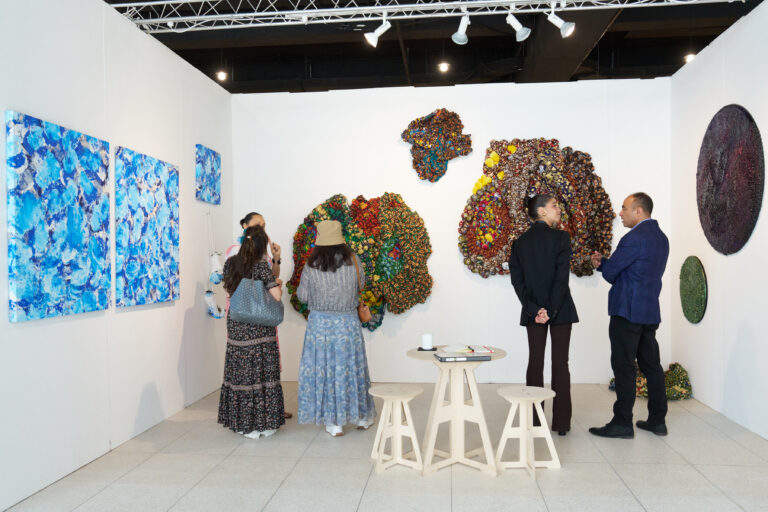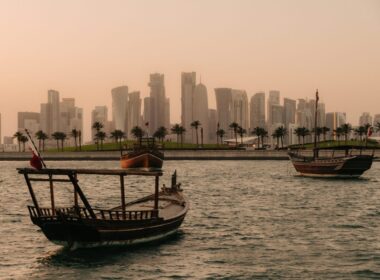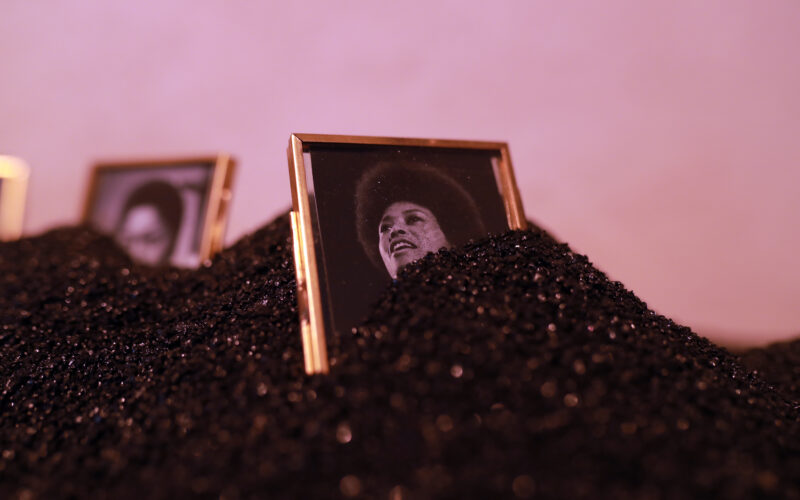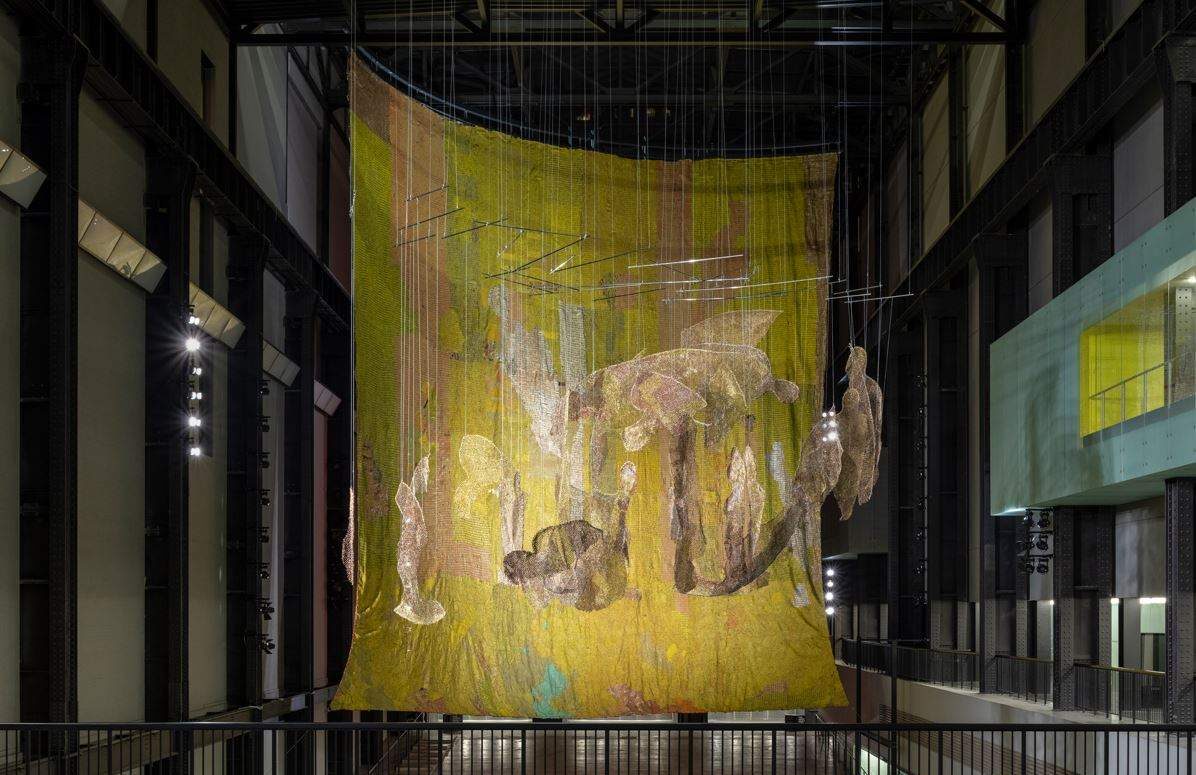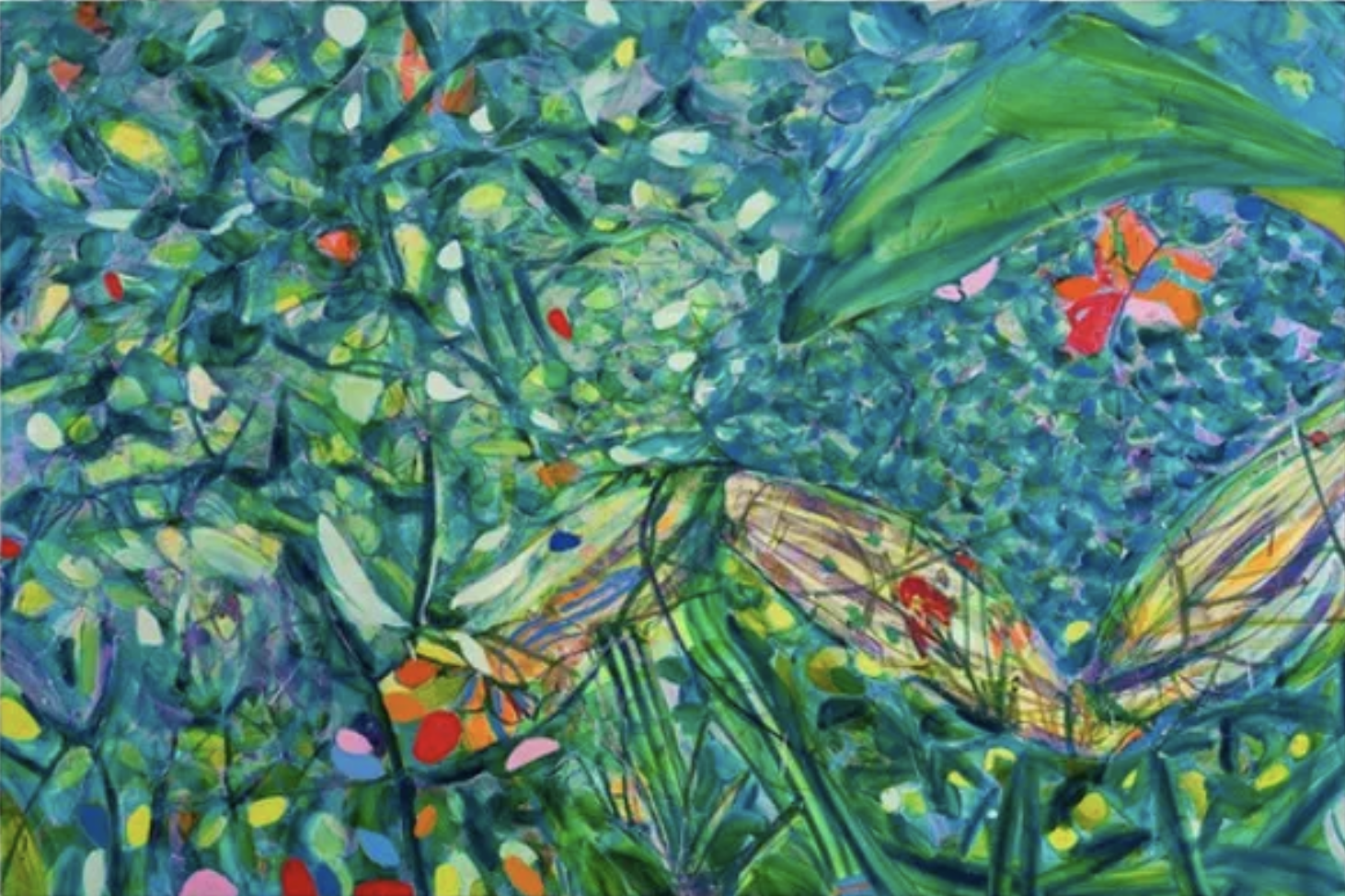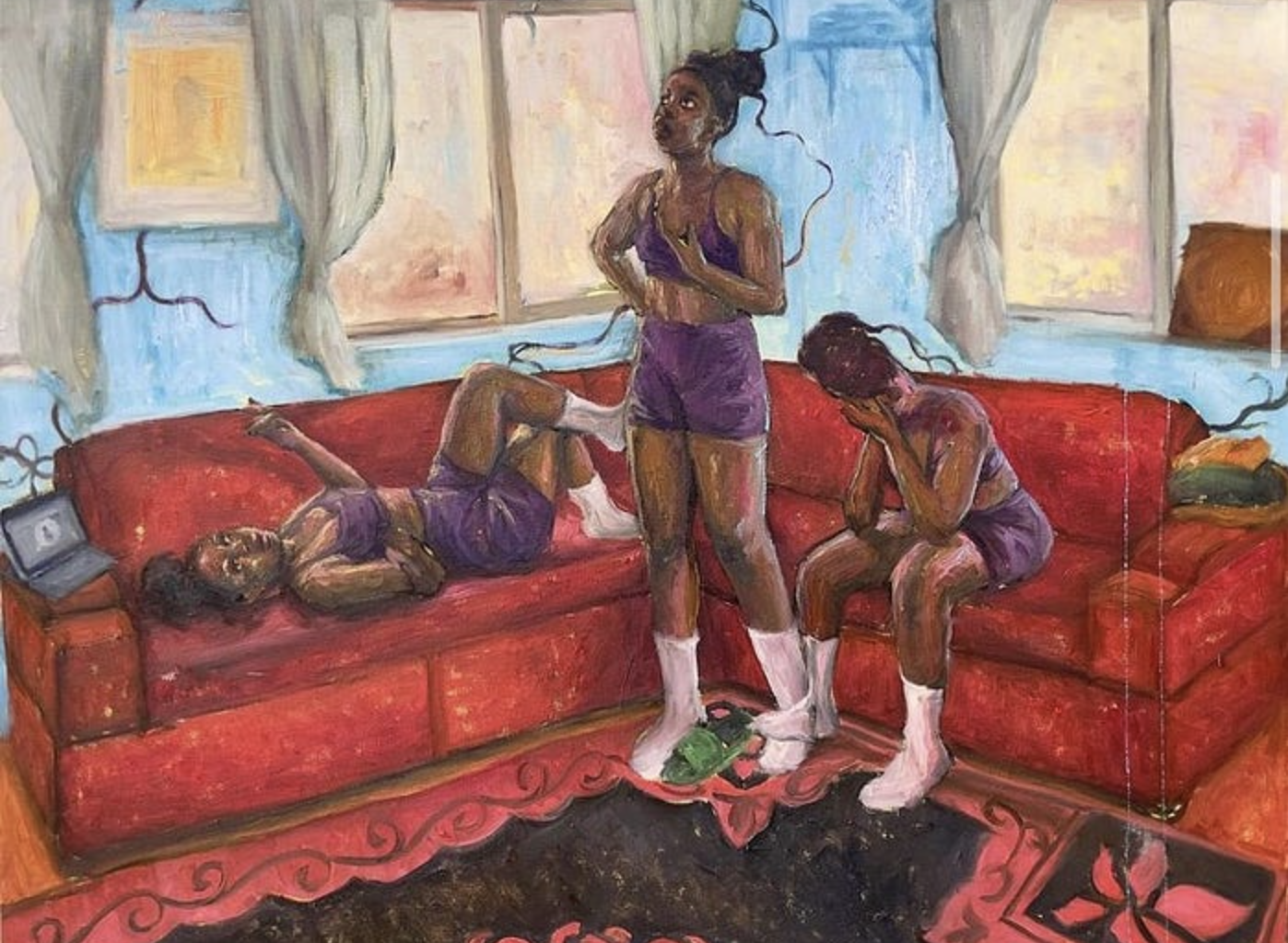Above: Installation, detail, Helina Metaferia, various works from ‘By Way of Revolution’ (detail), 2019–2023. Produced by Sharjah Art Foundation. Installation view: Sharjah Biennial 15, Bait Al Serkal, 2023. Image courtesy of Sharjah Art Foundation.
Situated on the Persian Gulf, Sharjah is the capital of Sharjah emirate and third largest city in the United Arab Emirates (UAE). The first Sharjah Biennial took place in 1993. Sharjah Art Foundation was established in 2009 to bring contemporary art and cultural programs to the communities of Sharjah, the UAE, the Middle East, and beyond. The Foundation’s core initiatives are the Sharjah Biennial, the annual March Meeting, residencies, production grants, commissions, exhibitions, research, publications and a growing collection.
Ritual and remembrance are omnipresent in the 15th Sharjah Biennial. The influence of Nigerian-born art historian, author, educator and curator Okwui Enwezor is deeply felt, despite his physical absence. The Sharjah Art Foundation had invited Enwezor to curate this iteration of the Biennial. Thinking Historically in the Present is the title, which he had envisioned for the project before his death in 2019.
Sharjah Foundation Director Hoor Al Qasimi had encountered the non-Western curatorial model that Enwezor brought to documenta 11 in Kassel, Germany in 2002. His inclusive, impactful, far-reaching practice informed and inspired her to lead the Foundation and the Biennial in new directions. Before Sharjah Biennial 6 (2003), she eliminated national pavilions and moved the exhibition from an expo hall into the city.
Decades later, Enwezor was on Al Qasimi’s mind as she curated the 15th Biennial. She shared her thoughts: “It’s very emotional for me because I started this project with Okwui. The last few years working on the Biennial, I’ve always referred to the title and the keywords that he left for me. I’m inspired by Okwui. I want to honor him and honor his legacy, but I’m also my own person. I’m a woman and coming from a different point of view and perspective, and I really wanted to bring that across as well.”
Organized over four years, the exhibition unfolding in 2023 is ambitious, expansive, polyphonic and multicentric. More than 100 artists from 70 countries are presenting projects in 19 venues, and 70 of the projects are new commissions. In a space opening onto Calligraphy Square, New York-based artist Carrie Mae Weems sets the stage for our experience of wide-ranging projects immersed in ritual and remembrance.
Weems, whose work has long confronted constructs of race, femininity and power, creates a multi-media homage to Okwui Enwezor. She brings together iconic sculptures, flowers, fabric, boat oars, ethereal photographs, audio and 100 books—sharing with visitors all those Enwezor wrote or edited in his lifetime. The In Between (2022–2023) invites us to sit and contemplate what we learned from the legendary curator, reminding us that the life of the mind is eternal.
London-born artist and filmmaker Isaac Julien is known for his multi-screen film installations and poetic narratives on race, class, and history. Here, he presents Once Again . . . (Statues Never Die) (2022) to engage philosophical perspectives on a flashpoint in the field: the legacy of Black art. Situated in one of the modern galleries near Al Mureijah Square, his five-channel black-and-white video installation imagines a critical dialogue between queer culture exemplar Alain Locke and idiosyncratic African art collector Albert Barnes.
Projected bigger than life in a mirrored room, the conversation around Black art history is intercut with archival footage of looted African artworks held by the British Museum and quotes from poets Aimé Césaire and Langston Hughes. A shadowy display nearby brings the subject to life. Traditional African masks positioned next to modern and contemporary figurative sculpture bear witness to the ineffable power of Black art.
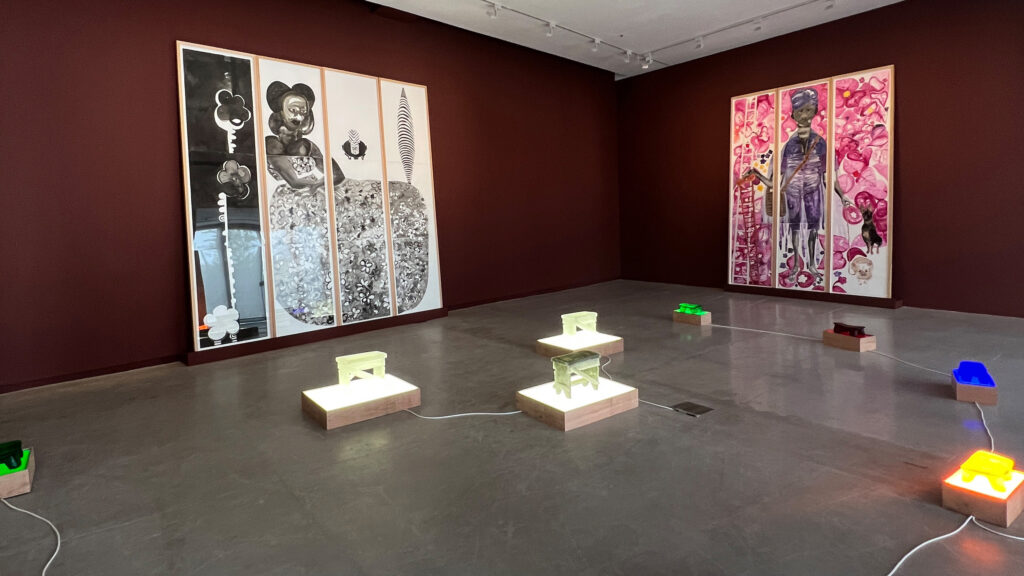
In a gallery a few steps away, María Magdalena Campos-Pons continues her autobiographical work with highly personal narratives that reify her Afro-Cuban origins. In Murmullo Familiar [Family Whisper] from her series, Liminal Circularity Part 1 (2021–2023), her Angolan grandmother is the central figure in monumental paintings that reimagine the Middle Passage as, at once, a forced journey and a consciously healing return. Beneath the paintings, a circle of cast-glass stools stands in for a stool passed down through generations in Campos-Pons’ family, remembering lost loved ones.
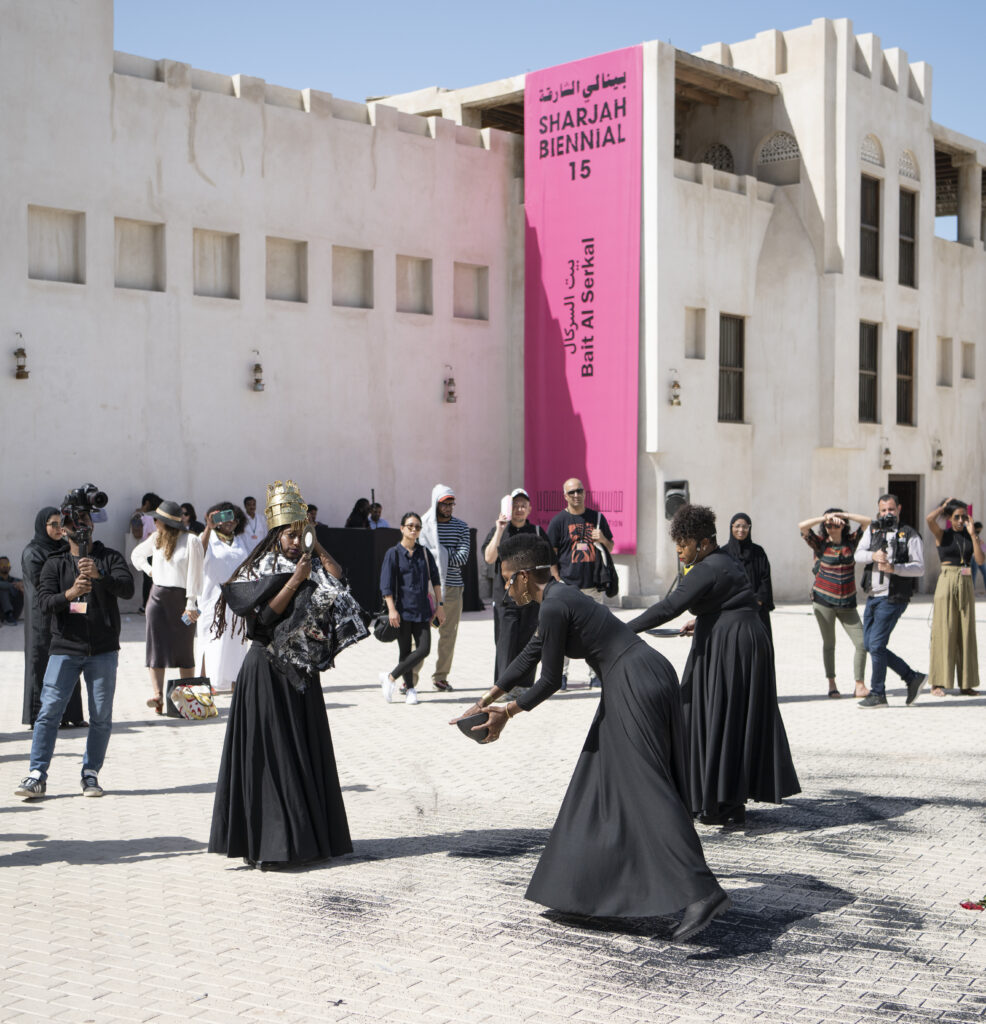
Bait Al Serkal, one of the historic buildings edging Art Square in Sharjah’s Heritage neighborhood, is the space where Ethiopian American artist Helina Metaferia brings women’s solidarity to the fore in a multi-media installation. Her film, The Call (2019), introduces female descendants of Black activists James Baldwin, Frederick Douglass, Dick Greggory, and others in performances celebrating women and resilience. On Art Square in Sharjah one morning, ArinMaya and Abby Dobson join Metafaria to present The Willing, a ceremonial ode to Black feminists. In their solemn, beautifully sung ritual, each one, in turn, wears a handmade brass crown and a quilted tapestry cape.

Born in the Dominican Republic, artist Joiri Minaya investigates colonial power in the tropics. Her wallpapers immerse social spaces inside two Biennial venues in pixelated tropical landscapes. The Old Al Jubail Vegetable Market is where Minaya’s tropical print spandex constricts the entrance to a section of the market where visitors can explore her performance videos and collages in small shop spaces. This is the setting for a reminiscence she reenacts on a stage while demonstrating how to cut up and eat mangoes. Mango Slice/The King’s Wife begins with Paul Gauguin’s painting The King’s Wife (1896) and the history of exoticizing and objectifying black and brown bodies. Mango Slice then turns to family histories around the sensual fruit and ends when the artist steps down to share juicy slices with the audience.
One of the most visceral remembrances in this Biennial, As British as a Watermelon, unfolds in a small space at the Africa Institute in Sharjah. From Zimbabwe, queer writer and performer mandla rae channels the acute emotions attached to her immigrant experience in the United Kingdom and the otherness of her in-between identity.
Permitted to enter a few at a time, we sit on a couch at the center of a room painted coral with soft sand-colored carpet. A few house plants with string lights soften the corners of the space, mandla articulates rage and vulnerability in a set of scenarios that play out on a life-sized wall projection. Her set is defined at the edges with fluorescent tube lights. Watermelons and a set of knives are her only props. As she caresses and rolls the melon, sings to it, stabs it, smashes its red pulp against her skin and forces choking handfuls into her mouth, she leads us to and through the pain and poetry of fragmented memories. To our immense relief, she emerges from the struggle both powerful and serene.
What might we take away from these rituals and remembrances? Perhaps an awareness of the enduring import of cultural histories. Art that remembers, respects, and responds creatively to Okwui Enwezor’s idea of Thinking Historically in the Present is a pervasive and enlightening experience in Sharjah Biennial 15. Carrie Mae Weems, Isaac Julien, María Magdalena Campos-Pons, Helina Metaferia, Joiri Minaya, and mandla are among artists who show us how we might navigate our own personal and collective histories. They invite us to consider the past as we define the future.
Cathy Byrd is an independent contemporary art curator, educator, and art writer. Her Fresh Art International podcast features more than 300 episodes amplifying the voices of artists, curators, filmmakers, and designers from around the world. Visit: FreshArtInternational.com and FreshArt.Education Follow @FreshArtIntl
